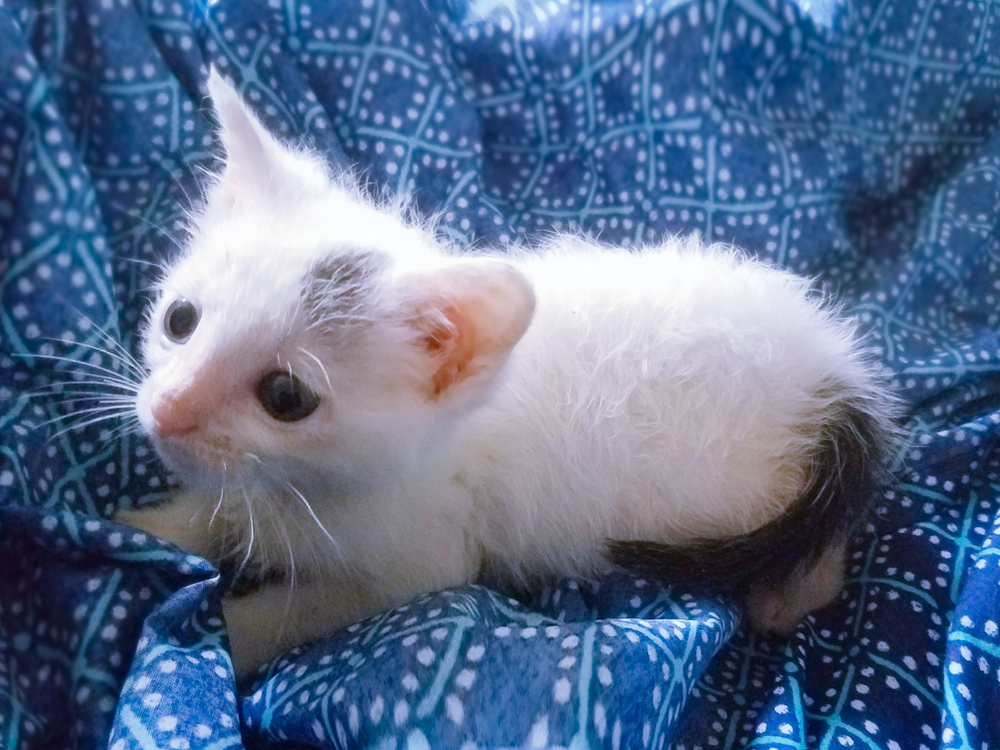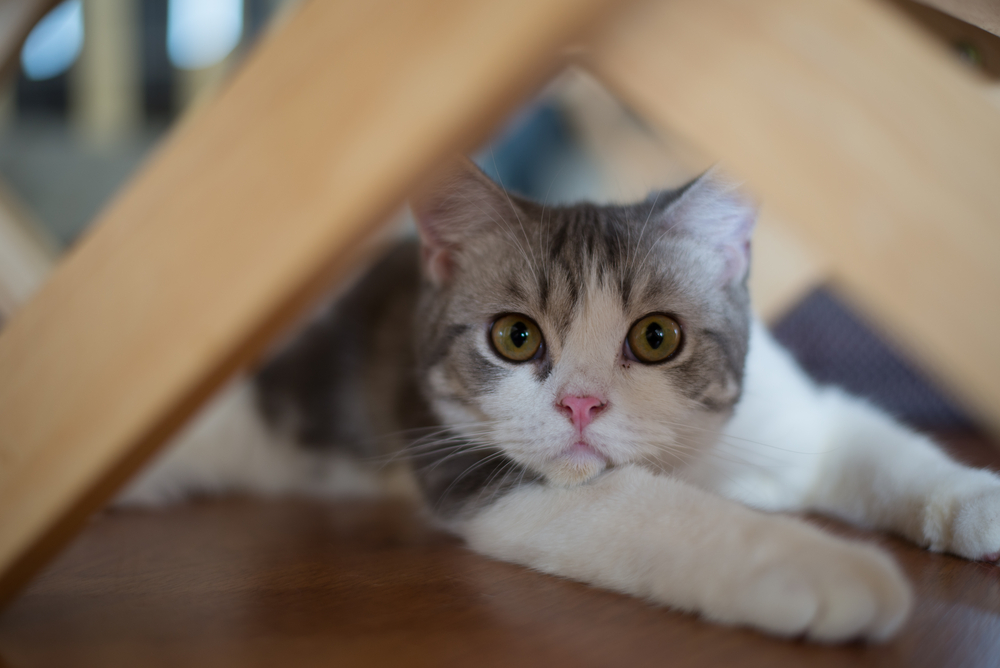Click to Skip Ahead
Breed Overview
Height:
10–14 inches
Weight:
4–11 pounds
Lifespan:
14–20 years
Colors:
Many different colors and patterns of coat, usually combined with golden, amber, or blue eyes
Suitable for:
Families looking for a laid-back and affectionate cat
Temperament:
Playful and friendly with medium energy levels; can be prolific hunters
The American Wirehair is a relatively modern breed, known for its harsh-textured coat that gives the breed their name. These cats are still quite rare, so you may not know enough about them to know if they will be suitable for you and your family.
American Wirehairs are originally descended from Domestic Shorthair cats, and they’ve inherited an easy-going attitude, but they still love to indulge their inner hunting instincts, even just against their toys! They can be reserved with strangers but are loving and affectionate with their families.
These cats are far more than just an unusual coat, and many families who have discovered this breed are now in love with their chilled-out attitude, playful natures, and love of purring! If you’re ready to find out more about this charismatic breed, read on to learn everything there is to know about the American Wirehair.
American Wirehair Characteristics
American Wirehair Kittens – Before You Bring One Home…

American Wirehair kittens are incredibly cute, and their coats are wiry to the touch from birth. While you may be tempted to sign up for a kitten right away, it’s important to first make sure that you can meet this breed’s requirements in terms of their living conditions. American Wirehairs love human company, so while they don’t mind entertaining themselves for a few hours a day, they will soon get lonely if left to their own devices while their families are at work.
Their coat and skin also need different care than those of a regular-coated cat. Their skin can be more allergy-prone and more oily than many other breeds, meaning you may need to regularly bathe your cat. They can also be prolific hunters, so if your cat goes outside daily, you’ll need to be prepared if they may bring home the occasional unwelcome present. If an American Wirehair lives indoors, then you’ll need to provide plenty of play activities for them to indulge their love of hunting with toys instead.
3 Little-Known Facts About American Wirehair
1. The Breed Is Fairly New
The American Wirehair came into being as recently as 1996 when a farmer in upstate New York discovered that one of his farm cats, a Domestic Shorthair, had given birth to a litter of kittens. Sadly, these were attacked by a weasel, and only two kittens survived. The farmer noticed that the ginger and white male kittens had unusually wiry coats. He contacted a local cat breeder, who bought both kittens and set about trying to breed more cats with this wiry coat. So, the American Wirehair was born!
2. Their Wiry Coat Is Due to a Genetic Mutation
The distinctive wiry coat of the American Wirehair is a genetic mutation that occurs spontaneously. It’s a dominant trait, meaning that at least half the kittens in each litter will have wiry coats. The ideal coat is medium in length, with a tight and springy curl. The individual hairs should all the bent, hooked, or crimped. Their texture should be coarse.
3. American Wirehair Cats Live Attention
Breeders of the American Wirehair call them “touchy-feely” cats. They love hanging out with their human families and are always happy to come and sit on your lap or next to you for a cuddle. They’re just as affectionate with total strangers as they are with people they know.

Temperament & Intelligence of the American Wirehair
American Wirehairs are extremely smart, so don’t expect them to be happy sleeping all day without the chance for playtime. They expect plenty of interaction from their human owners, and while they’re not vocal, you’ll definitely know that they want attention. They’re not happy being left alone for long periods. If everyone is out of the house most days of the week, then this may not be the breed for you.
Besides being smart, American Wirehairs have a fantastic temperament. They’re engaging, playful, and simply delightful to be around. They can be prolific hunters, so be prepared for an outdoor cat following their instincts or an indoor cat becoming frustrated if they don’t have any toys to play with in order to release their desire to stalk and pounce!
Are These Cats Good for Families? 👪
American Wirehairs are a great choice for an all-around family cat. They love playing with kids and have plenty of energy for endless games. But after all the excitement, they’re more than happy to come and relax and treat you to their loud purr as they settle down.
These active cats thrive on plenty of attention, so you may find that having multiple family members gives them all the socializing that they love so much.
Does This Breed Get Along With Other Pets?
American Wirehairs have an easy-going attitude, which makes them a great choice for a multi-pet household. They’re not overly territorial, so they are usually happy to live with other cats, as long as there is enough attention and lap space to go around! They can also adapt to life in the same house as dogs, as long as they’re slowly and carefully introduced to each other. Some American Wirehairs will even play with the family dog, a great way to keep both of them entertained!
Remember that their high prey drive may put smaller pets at risk if they’re left unattended together. If you do have both, it’s best to keep them in separate areas of the house, and if you allow your small pet free time out of the cage, make sure there’s no way that your cat can access the same area of the house.

Things to Know When Owning an American Wirehair
Becoming the new owner of a sweet American Wirehair cat might seem like a tempting idea, but before you decide, make sure you’re prepared for the amount of time, money, and dedication that you’ll need in order to take care of your new kitten for the rest of its life!
American Wirehairs are low maintenance in many ways but differ from regular straight-haired cats in some of their care requirements. Before you go ahead and start calling those breeders, check out the extra information that we’ve rounded up for you below.
Food & Diet Requirements 🐡
American Wirehairs will do well on high-quality cat food that you might feed to any other breed. Check that meat is listed as the first ingredient and that the food is free from artificial ingredients like colorings, flavorings, and preservatives.
Whether you choose to feed dry kibble, raw food, or wet food will be up to you and your cat’s preferences. It’s a good idea to speak to your kitten’s breeder and find out what food they use. Source the same brand, and use this for at least the first month or so that your kitten is with you. Then, you can slowly make the switch to your preferred brand once your kitten is settled in their new home.
Always select a food that’s designed to meet the nutritional requirements of your cat at their particular life stage. The tailored blend of nutrients will help make sure they stay as healthy as possible.
Exercise 🐈
American Wirehair cats are active and energetic, but this will usually be interspersed with long naps in the sunshine! Make sure your cat has plenty of opportunities to exercise, especially if they’re an indoor cat. Providing enrichment like bird-watching stations, outdoor enclosures, and scratching posts all help make sure your cat’s physical needs are met.
Encouraging your cat to play with a variety of toys is always a good idea, and most American Wirehairs don’t need much encouragement to pounce around. Leaving a few toys out for your cat when you’re away from home will help them stay entertained.
These cats are known for being prolific hunters, so if your cat does go outside, consider fitting their collar with a bell to warn off small animals. You could also keep them in overnight and at dawn and dusk. An indoor American Wirehair cat will benefit from toys designed to let them use their hunting prowess to the full!

Training 🧶
This breed is intelligent and loves the challenge of training. Using positive reinforcement, you can teach your cat a wide range of different tricks.
Grooming ✂️
The American Wirehair coat can be easily kept in check with a weekly brush, but their skin does need extra attention compared to straight-haired breeds. As with other breeds with textured hair, their skin can be oily and sensitive.
Giving your American Wirehair regular baths using cat-specific shampoo is recommended. This will help remove excess oils from their skin and wash away potential allergens, like pollen. Their ears can easily build up dark wax, which should be removed using a cotton ball when necessary.
Health and Conditions 🏥
The breeding of the American Wirehair includes frequent outbreeding to the American Shorthair, and as a result, they’re exceptionally healthy for a purebred cat. They suffer from few health conditions, and any breeder will be able to explain these in more detail.
- Skin allergies
- Hypertrophic cardiomyopathy
 Male vs. Female
Male vs. Female
We always recommend choosing your new cat based on their personality rather than their sex. You might find that you need to put your name on a waiting list for an American Wirehair kitten, and you may not get to choose your preferred sex, especially if the litter is small and there are other families ahead of you.

Final Thoughts
Ready to become the proud owner of a rare American Wirehair? These affectionate and charismatic cats might have one of the most unusual coats that we’ve ever seen, but they have so much more to offer than that! They’re playful and engaging and love human company.
American Wirehairs are healthy and robust cats, although you may need to watch out for that strong hunting instinct. They love their families and will happily interact with strangers too. Life with an American Wirehair will never be boring, that’s for sure! If you have one of these distinctive cats, we’d love to hear all about them in the comments below.
See also:
- How to Choose the Right Kitten from a Litter: 8 Tips and Tricks
- 18 Cutest Cat Breeds (With Pictures)
Featured Image Credit: OlgaOvcharenko, Shutterstock





 Male vs. Female
Male vs. Female






